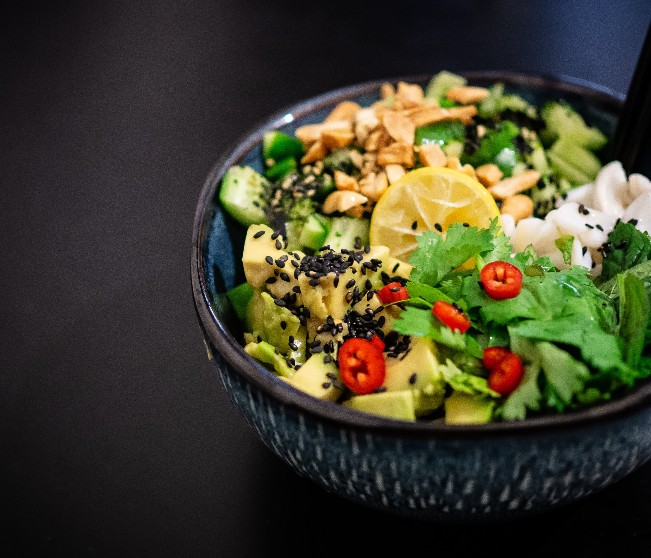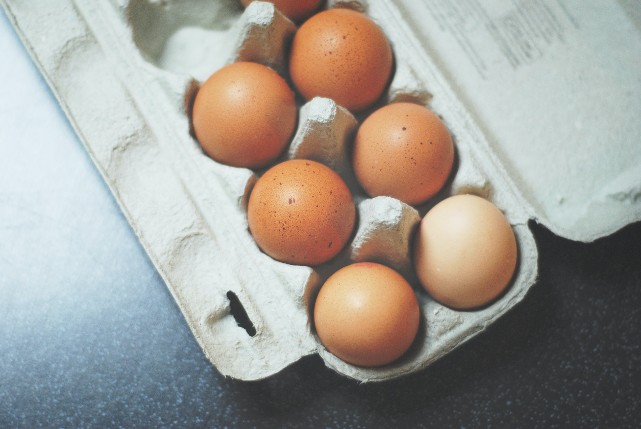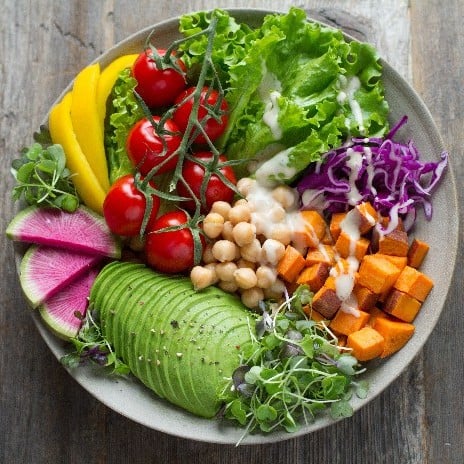The 10 best healthy foods for children
You are well aware that giving your children vegetables rather than ice cream is the better option. Nonetheless, what are the healthiest foods for kids, and how do you get them to eat them? Continue reading for expert advice as well as our list of the top ten vegan desserts for kids.
Anyone who has ever tried to feed a child anything other than cereal or ice cream knows that they don’t always eat what you want. Trying to figure out what to make to feed their tiny bodies is stressful. Furthermore, just because it is served does not guarantee that your children will eat it. Children, on the other hand, need nutritious food that contains healthy fats for their brains, calcium for their bones, and the majority of the vitamins and minerals that vegetables provide, among other things. We gathered expert mealtime tips as well as a list of the top ten foods that are safe for children to alleviate some of the tension and ensure you are providing your child with the healthiest foods possible.
These ten foods are not only nutritious for your children (and you! ), but they’re also adaptable and simple to prepare.

Greek yogurt
“Yogurt is really a fantastic option for breakfast, a snack, or even a dessert, but you have to watch the added sugar content,” says Katie Andrews, M.S., R.D., owner of Wellness by Katie, a childhood nutrition coach. “It’s a filling, nutritious snack that’s high in protein and vitamin D, a nutrient that many kids don’t get enough of.” Yogurt also contains probiotics, which are beneficial bacteria that are essential for gut health. Is there a quick and easy way to choose a healthy yogurt? Buy pure Greek yogurt, which contains twice the protein of standard yogurt and has no added sugars.
Toasted Beans
Beans are an underappreciated superfood. They’re high in fiber and protein, as well as being inexpensive and quick to prepare. Purchase low-sodium canned beans, such as black beans, chickpeas, or kidney beans. Simply open the can, rinse to remove any excess sodium, and add to any dish. “In a quesadilla, replacing ground beef with beans or tossing beans with pasta helps preserve high quality, lean protein while also providing a vital nutrient: fiber,” Andrews says. Look for brands like Banza, Pow, and Tolerant Foods to find bean-based pastas. “Kids between the ages of four and eight require approximately twenty-five grams of fiber a day, but most items sold directly to children, such as fruit snacks and cheese crackers, provide very little, if any. Fiber has been found to aid in safe digestion and to keep your kids fuller for longer, so they don’t ask for a snack five minutes after dinner,” Andrews explains.
Egg
Six grams of protein, vitamin D, iron, and vitamin B12 are all contained in one large egg. Some eggs are fortified with omega 3 fatty acids, which help in the growth of children’s brains. Trans and cholesterol-saturated fats have a greater effect on raising bad cholesterol than eggs, so don’t worry about them. Skip the pastries, fried foods, and processed meats at breakfast and instead make scrambled eggs for your kids. If your kids don’t like scrambled eggs, try egg salad or egg casseroles instead.
Eggs are also an excellent first meal for infants. Previously, doctors advised against feeding eggs to babies before they were twelve months old, but new research suggests that introducing allergenic foods between the ages of six and twelve months will help prevent food allergies.

Avocado
Avocados are an easy way to incorporate healthy fats into your child’s diet. They’re high in monounsaturated fats, which help to reduce inflammation and maintain healthy cholesterol levels. Since fat travels slowly through the digestive tract, it keeps kids fuller for longer. But do you know what the best part of an avocado is? Their adaptability is impressive. You can eat them with a spoon, mash them on toast, blend them into a smoothie, toss them into a tuna or chicken salad, or use them to make an avocado pesto pasta sauce. Avocados are also an excellent first meal for infants.
Sweet potato
If you’re short of time and want to eat something healthy, this is the recipe for you. Microwave a sweet potato for 3 to 5 minutes after washing it and poking some holes in it (depending on its size). Slice it lengthwise, and scoop it onto your child’s plate after it has cooled. Sweet potatoes are appealing to all ages, whether your child is six months old, six years old, or sixteen years old (because they are sweet!). They’re high in vitamin A (more than 300 percent of an adult’s daily value), potassium, and fiber. Limiting salt intake while rising potassium intake helps to keep blood pressure and heart health in check.
Pure milk
Milk, which is high in calcium and vitamin D, has been found to aid in the development of strong bones. One 8-ounce glass contains eight grams of protein and is rich in phosphorus, potassium, and vitamin B12. Cow’s milk should not be given to babies until they are one year old. Offer whole milk until they’re two years old, just keep it under 32 ounces a day or they’ll be too full to eat their own food. Kids should drink low-fat milk after the age of two, with a target of three servings of dairy per day. Yogurt and cheese also count. If your child dislikes cow’s milk, there are a variety of alternatives available today. However, for your children, check the nutrition labels and select plain or unsweetened varieties. Plain can contain additional sugar to match the sweetness of dairy milk, making it more palatable to small taste buds. Every alternative milk has a unique nutritional profile, with soymilk having the most protein. And as long as the milk is fortified, you’ll get the same calcium and vitamin D benefits.
Nuts&seeds
Substitute seeds and nuts for low-fiber, crunchy kid snacks (you know the ones that are basically air) to get a balanced dose of fiber, healthy fats, and protein. Cashews, sunflower seeds, pecans, almonds, walnuts, chia seeds, and other nuts and seeds may be added to the mix. If your child has a tree nut allergy, seeds can be a good alternative and a great way to get vital nutrients. Nuts are high in magnesium, a mineral that is essential for bone growth and energy production. Walnuts, pecans, flaxseeds, and chia seeds are rich in alpha linolenic acid (ALA), an omega 3 fatty acid that the body cannot produce (and therefore must be consumed). Offer nuts alone or with dried fruit, add flaxseed to smoothies, sprinkle chia seeds on peanut butter toast, “bread” chicken with sliced almonds instead of breadcrumbs, or make your own granola bars.
Grains
Whole grains provide nutrition, a resource that is severely lacking in most children’s diets. Fiber helps them stay normal and satiated. Children require approximately twenty-five grams a day, but many snacks only provide one-third of that amount. Don’t be misled by front-of-pack marketing; look for 100 percent whole wheat or even whole grain in the ingredients list, as well as at least 3 5 grams of fiber per serving. Oatmeal, whole wheat pasta (try half whole wheat, half white if they can’t handle all whole wheat), brown rice, and whole wheat tortillas and bread are all easy whole grain foods for kids. When making pancakes, cookies, or pizza dough, you can use whole wheat flour or white whole wheat flour.
Berries
A cup of berries contains four grams of fiber, as well as other antioxidants and vitamin C in the form of anthocyanins. The sugar content of blueberries, blackberries, and strawberries is lower than that of many other fruits. Fresh berries make a perfect snack for kids or a delicious yogurt topping. If berries aren’t in season, purchase unsweetened frozen berries and toss them into a smoothie jar or overnight oats.
Any vegetables
Adults and children alike do not consume enough vegetables. Kudos to you if you can get your child to eat some vegetable! Nonetheless, the more color and variety of vegetables available, the better. Leafy greens such as spinach and kale are high in vitamin K, red vegetables and oranges are high in vitamin A, peppers are high in vitamin C, and cruciferous vegetables such as broccoli, cabbage, and cauliflower produce cancer-fighting compounds and feed healthy gut bacteria.
“Really, it’s about removing the fear of vegetables,” says Andrews. “While a slice of pizza is very approachable, a stalk of broccoli can seem intimidating.” “As a result, make vegetables simple and available. Snack on celery, carrot, and cucumber sticks that have been washed and cut into sticks. Plant a small garden with sweet baby and cherry tomatoes and peppers if you have any green space; when kids grow their own food, they are proud of the results and thus more willing to enjoy the bounty.” “Make-your-own taco bars or maybe a pizza night at home is really a nice way to inspire younger chefs!” says Andrews.
After a few times of offering a vegetable, don’t give up. It needs a lot of repetition. Changing up the way you serve the vegetables can also help. Some children will eat cooked diced tomatoes in a pasta sauce but not raw tomatoes.
Suggestions for Encouraging Your Children to Eat Healthy Foods How can you get your children to consume a lot more of these super nutritious foods? Try out some of these suggestions.
Use MyPlate as a starting point. Half of their plate should be fruits and vegetables, one quarter should be whole grains, such as whole wheat pasta or bread, and one quarter should be protein, such as eggs, cheese, beef, nuts, or beans.
Keep in mind that while it is your duty as a parent to have a variety of food, it is your child’s job to consume it.
When your children are active in the cooking process, they are much more likely to try the food. Try these ten easy dinners that kids can help prepare.
Emma Fogt, M.B.A., M.S., R.D.N., suggests serving food family style so that kids can pick what and how much they want to consume from the food on the table. She advises, “Always have one food on the table that the limited eater kid enjoys.” “The kid can eat a lot of bread, but you’ll have all of your other foods on the table for them to try.”
Fogt also suggests that you “be a good eating role model.” “Kids are paying attention to everything you do! For example, sit down with your children, eat every 3 to 4 hours yourself, eat healthy meals and snacks, make mealtimes enjoyable and relaxing, play games at mealtimes, get talking, get rid of phones at mealtimes, and take the focus off the food by making it a time to talk. Since this downtime is truly sacred in our busy lives, and it is not about the food.”
Take the pressure off. According to research, children who were forced to consume certain foods as children often grow up to hate or avoid certain foods as adults. Forcing children to eat makes mealtime uncomfortable for both them and you. “Remain calm and carry on,” Fogt advises. “It’s a long process, and I hate to say it, but as parents, it can take years. You’ve got to be so’ laid-back.’ There will be no pressure on the child to eat, and there will be no pressure on you to force-feed.”
Andrews advises that offensive words be avoided at the dinner table. “Saying, ‘You’re probably not going to like it, but give it a try,’ teaches a child that the food isn’t worth trying!” she explains. Introduce new foods in addition to those they are already acquainted with.
Keep in mind that you are not alone. If assistance is needed, seek it! Dietitians, pediatric psychologists, pediatricians, and feeding professionals will all assist.
You might be interested in:
Amazing TOBBI’s Kid’s Ride-On Cars Age Guide











LEAVE A COMMENT
You must be logged in to post a comment.